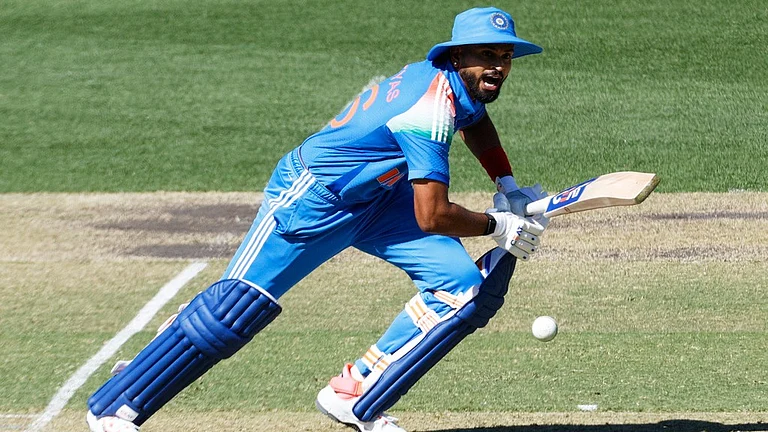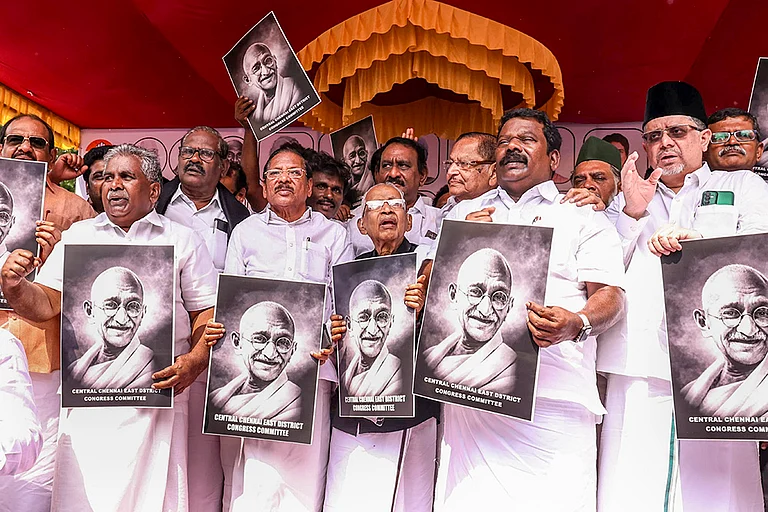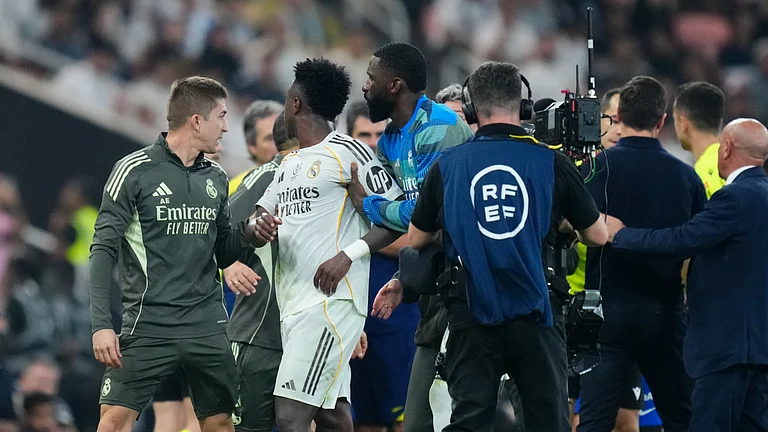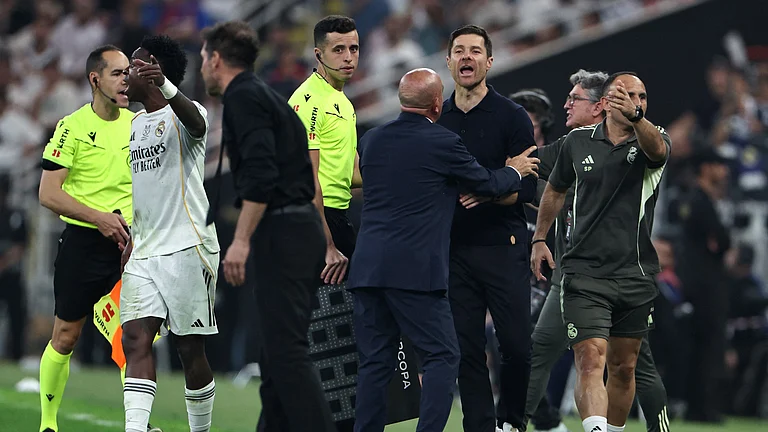With multiplexes finally reopening, the inveterate movie buff in me returned to the big screen at long last to watch No Time to Die, the latest in the 007 franchisee, in 3D, Dolby and the works. Wow!
I booked tickets on BookMyShow and hired an Ola to get there. The ticket QR code on my phone is scanned before I’m allowed to pass through a metal detector. Soon, I’m inside the auditorium. Simple and convenient!
It’s time to sit back and enjoy. The long-loved signature tune and the all-too-familiar background music of a typical Bond movie give me the goosebumps, bringing back cascades of memories of a bygone era, from the Eastmancolor days of Sean Connery to the digital era of Daniel Craig.
Yet, I find no fun in watching a James Bond movie now. I hear no whistles during action sequences, no catcalls during lovemaking shots, not even a single clap in a 163-minute film. What has the world come to? Am I watching the film with the House of Windsor royalty or the stiff-upper-lip British gentry, who would not put their hands together even when Dhanno races ahead of a menacing bunch of mustachioed dacoits to save Basanti over an izzat ka sawaal (a question of honour, if you please!).
Okay, single-screen theatres are close to extinction now and cinema and cinema-viewing have changed forever in the past two decades, thanks to new technologies and the advent of swanky, multi-screen theatres. But do they still provide the kind of fun and thrill we had in our teenage years? Well, I do not want to repeat the oft-quoted ‘our days were better’ refrain to sound like a geriatric man living on the staple of the ‘old-is-gold’ nostalgia. But let me shout from my rooftops that movie-watching for us was an adventurous mission, unlike today when it feels like a humdrum exercise. I can only pity the new generation of viewers. Poor kids!
My memories of those days are not sepia-tinted yet; those are as clear as a digital photo with a zillion pixels. I still distinctly remember the day I watched The Spy who Loved Me, starring Roger Moore as James Bond in Bihar’s Muzaffarpur. Allow me to go back into an extended flashback. Yes, the good old flashback that the GenX audience has not seen enough in the era of “content-rich cinema”, to understand its real worth in the unfolding of a potboiler.
Keep on laughing at the formula films, sons. You don’t know what you have all missed!
The Spy Who Bunked School
Unlike other English movies, Agent 007 ran in regular shows, not the solo morning slot at Prabhat Talkies in Muzaffarpur. The Spy Who Loved Me (1977) was the first English film to get that distinction in the bustling town of north Bihar, two years after its international release. I had to make sure nobody spied on me when I planned to bunk classes to watch it in a morning show. But life throws curveballs at your face, just to enliven things. I bumped into half-a-dozen classmates, all in navy blue-and-white uniforms, hiding in a dark corner. Intelligent kids all, they had done their homework and knew all about Ursula Andress emerging from the sea in Dr No (1962), before I could tell them and show off. They were more curious to see what Barbara Bach and the new Bond girls had in store for them. None of us returned disappointed that afternoon. On my way back, I rode my rickety English Raleigh bicycle, bought by my father from his first salary in the mid-1950s, as if it was Roger Moore’s Lotus Esprit S1. Thankfully, I reached home safe and in one piece!

For repair: Boy carrying an old TV
No educationist worth his PowerPoint has done any survey on why schools regularly recorded low attendance on Fridays in those days. No, it was not because of jumma ki namaaz. It was the day when all movies were released (they still do). Most teenage cinephiles of my generation bunked classes to get the first-day-first-show thrill. I, for one, shall remain eternally grateful to Pandit-ji, the chaiwala near my alma mater, who was kind enough to keep my bag for four hours at his shop without complaining, week after week, on pro bono basis. For us, he was the original philanthropist, long before anyone had heard of Warren Buffett!
Morning Shows the Day!
Morning shows were the all-time favourite of all students. Once, ten of my classmates thought it wise to skip a ‘useless’ math test together to watch Texas Detour (1978), which had become the talking point in the hallowed precincts of our school. Agreed, it was no Citizen Kane (1941), but among adolescents in town, it took just a week to attain cult status. We rubbed our eyes in sheer disbelief when we saw a topless scene, even if it was a fleeting one. Today, I see youngsters sauntering out of the theatre at a languid pace to buy nachos even during the most passionate lovemaking scenes of a film. Too much of OTT can do that to you!
Our Friday gang of class-bunkers rarely skipped the morning show of any foreign film, if its poster had ‘enough’ to tempt us. They never let us down. We even watched the Hindi dub of I.V. Sasi’s Her Nights (1978), which was erroneously publicised as an erotic film. In the theatre, much to my horror, we saw a familiar face: one of my schoolteachers. We saw each other from a distance. Contrary to our fears, from then on, he became generous in doling marks to us in exams. He expected us to take our encounter in a seedy theatre to our graves, in return for his favour. Sorry sir, can’t take it any further!
Later, a deluge of dubbed south Indian movies hit us. Though clippings of porn films were spliced in to lure audiences, the magic of watching morning shows had ebbed. A friendly video cassette shop owner, who was just a call away, had arrived in the neighbourhood!
Advance Beating
Getting tickets to any new Amitabh Bachchan-starrer or any other blockbuster may have been a herculean task, but was never an impossible one. A few kind-hearted theatre owners sold tickets through advance booking. But only the bravehearts, who were not afraid of getting bruises all over, managed to return alive from the black hole called ticket counter. As we risked our lives to get tickets, the cinema hall staff observed us nonchalantly from a distance, as though we were playing buzkashi. I failed twice to get tickets for Dostana (1980) at Shekhar Talkies in Muzaffarpur, but cleared the hurdle in my third attempt.
Black Was Not Always White
India has always been a nation of jugaad. I often failed to buy movie tickets from the counters due to my fears of being asphyxiated, but there were always some good Samaritans to lean on to. They sold tickets in ‘black’ in the dingy lane adjacent to the theatre. It took us a while to realise that most of them were hand-in-glove with the theatre owners, who gave them tickets in bulk in advance to sell, before they opened the counters. It was worse than booking Tatkal tickets on the Railways website. While Dharmendra’s on-screen black marketer, selling movie tickets while mumbling “Ek-ka-teen, ek-ka-teen…”, may have been redeemed by his naiveté-as-honesty, his real-life counterparts did not always believe in doing dishonest business with absolute honesty. Some smart alecks also sold fake tickets, which I would fail to detect, till I saw someone else munching potato chips on what I thought would be my legitimate seat.
Getting the ticket was, however, only half the battle won. The next round of the steeplechase was to invoke Jesse Owens when the gates of the theatre opened for viewers. Since often, seats weren’t numbered, a free-for-all race to grab a prime seat invariably ensued, before the lights went out. There was no usher around to control the situation, but thankfully, normalcy would return as soon as the projector started rolling. “Baaees reel” … somebody would exult loudly after reading the censor certificate. Everybody would be pleased to know that the run time of the film was three-and-a-half hours. Absolute paisa vasool!
ALSO READ: Our Past In The Present

Stardust (clockwise from left): Old advertisement with star cast; a movie billboard; a gramophone player; film crew on location.
Doing a Ganguly Long Before Lords
A few AC theatres were coming up, few others claimed to be ‘air-cooled’, but the majority were still closer to nature, with only a few fans to cater to 1,500 movie lovers crammed inside a humid theatre, looking dangerously like a gas chamber. Little surprise, getting a seat in a row near a fan was nothing less than manna from heaven, even if the noises coming out from their rickety blades often made dialogues inaudible. Worse still, there were theatres that saw no need to provide any fan for viewers in the front rows. But who cared? Stripping down to your vests was not an offence then. It was like watching cricket at the Sydney Cricket Ground, minus the sun and the Smirnoff.
ALSO READ: Fallen Earth And Divine Soil
Multiplexes do not differentiate between a prince and a pauper today, but theatre owners of yore were socially conscious of the yawning gap between haves and have-nots. The front rows with cheapest tickets were disdainfully referred to as ‘chavanni class’ by film critics, but their audiences were the real livewires.
If there was any patent for one-liners, catcalls and wackiest of whistles, they would have won it hands down. Sometimes, they would toss their vests up in the air and break into impromptu gigs in the open space in front of the big screen. Once, when a leading actress (Hema Malini, to be succinct!) regained consciousness on screen and coyly asked, “Main kahan hoon? (Where am I?)” rather innocently, a theatre wit was ready with his quip at the top of his voice, “Neelam Talkies, Madhubani mein!”
ALSO READ: A Catalogue Of Melancholic Ghosts
On the Mat for a Potboiler
Housefull had a different connotation in those days. Theatre owners always kept additional chairs and benches ready to cater to the teeming crowds. In smaller centres, people did not even mind sitting on a dhurrie to enjoy a film. Rajshri’s Nadiya Ke Paar (1982), for example, had a jubilee run in Patna, Muzaffarpur and Darbhanga. They would have had a longer run, had the owners not accommodated people who flocked their theatres on bullock carts from remote villages.
Interval was often more fun than the movie itself. Nowadays, I heave a sigh when I see kids during the break struggling to carry buckets of popcorn and glasses of fizz-less cola, large enough to feed the family. I empathise with their parents who get poorer on every outing with their family, but it also makes me nostalgic about all the great stuff I had savoured in the dark for a pittance. Popcorn was nowhere in the scene at theatres. Samosa, or singhada, was a perennial favourite. At 15 paise a piece, or seven for Re 1, it was a steal at many theatres. Regent cinema in Patna, in fact, introduced a special ticket category that came with two samosas and a glass of Pepsi as late as 2000. Needless to say, it was an instant success.
What Wharton Did Not Teach!
I am sure none of them had any degree in business management, but some theatre owners had an uncanny marketing sense that would do a Wharton graduate proud. When Jai Santoshi Maa (1975) was the rage, Shyama Talkies in Katihar set up a makeshift temple in its lobby to enable devotees to offer money to the deity. Many other theatres across the country did the same. Others hit upon the “Ek-ke-saath-ek-free (buy one, get one) scheme long before big brands conjured up millennium sales. A B&W classic would be screened along with a recent colour film, for the price of one ticket. It was probably their way to educate us on Hindi cinema!
Multiplexes will now throw out anybody who dares to throw a coin at the screen, but there was a time when throwing coins was the most popular expression of a moviegoer’s appreciation of a scene. Mythological movies—near-extinct now—earned the most chiller, followed by foot-tapping numbers. Sweepers at theatres never complained, since it made them richer by a few rupees every morning.
Trailers, lobby cards of upcoming movies and freshly-painted posters of new films were a huge draw. We would watch the artists paint posters meticulously for hours in the backyard of the theatre complex. I don’t think any one of them became another M.F. Husain, but some of them did seem to be naturally gifted. They would make Gabbar Singh look as menacing on the posters as he appeared on screen.
The new-age film critics scoff at formulas that Bollywood concocted to perfection over the years. But we did not ever get tired of hearing the same dialogue or watch the same scene, from “Yeh shaadi nahin ho sakti (Stop this wedding)” to “Main tumhare bachche ki maa banne wali hoon (I am pregnant with your child)” in film after film. That is what made Hindi cinema so lovable.
Oh, Bollywood, get back to your factory settings and gimme back my cinema!
(This appeared in the print edition as "Stop the Ride, I Want to Get Off")
ALSO READ


























